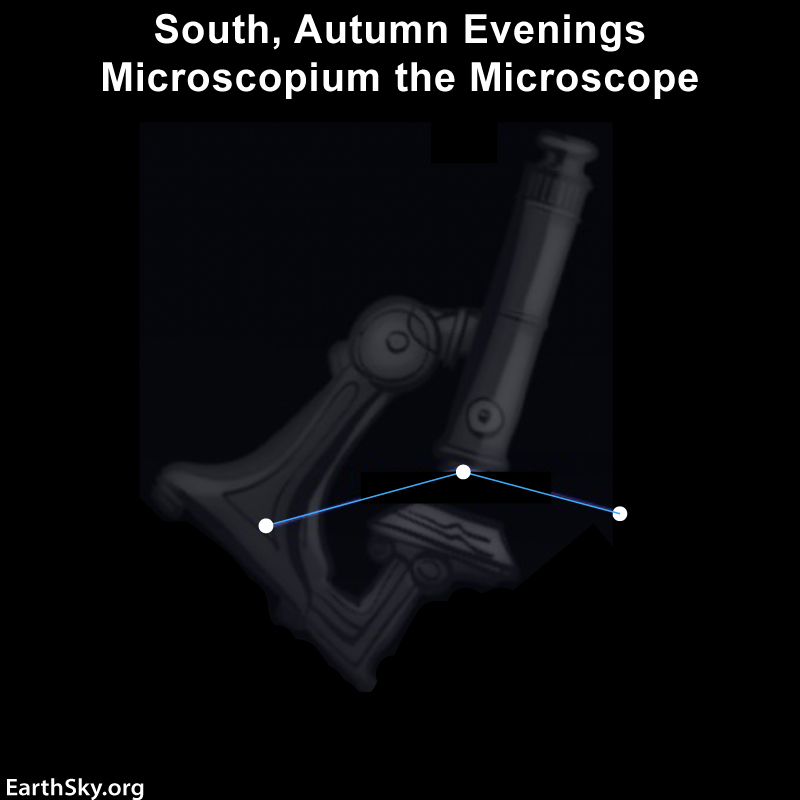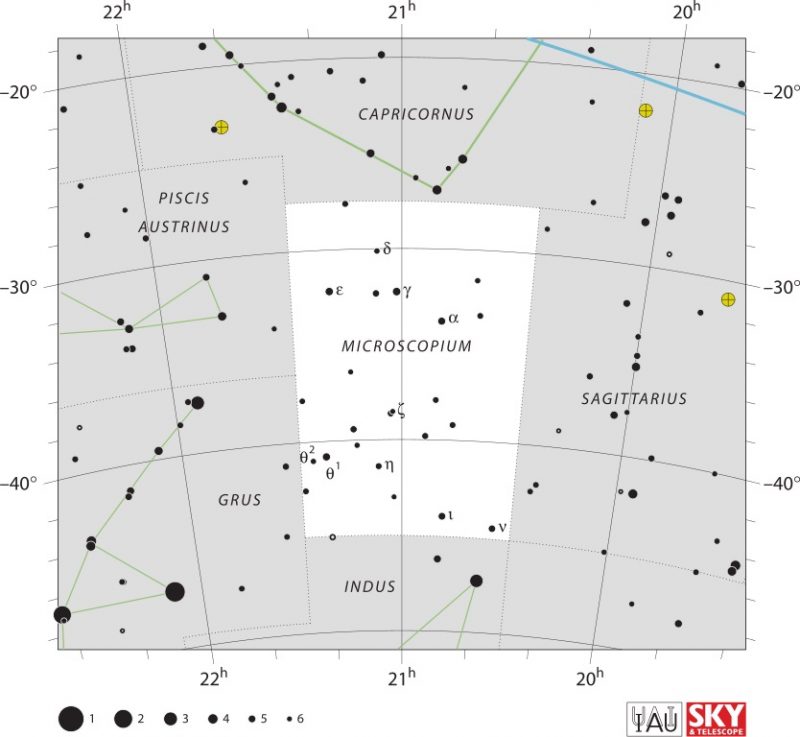
Microscopium is one of the quieter corners in the night sky. It’s more remarkable for what it lacks than for what it contains. With no bright stars, nebulae, clusters, or galaxies, Microscopium is not usually an observing target for amateurs.
How Microscopium got its name
In the 18th century, Nicolas Louis de Lacaille traveled to the Southern Hemisphere to observe the skies. During this time he gave names to 14 constellations, including Microscopium. Lacaille honored the state-of-the-art scientific instruments of his time by naming a dark patch of sky after the microscope, although the stars do not in any way resemble the object.
Objects in the Microscope
Microscopium the Microscope is directly south of Capricornus. Microscopium’s brightest star is the magnitude 4.67 Gamma Microscopii. It lies 223.5 light-years away. To its southeast is magnitude 4.71 Epsilon Microscopii at a distance of 165 light-years. To Gamma’s northwest is magnitude 4.88 Alpha Microscopii at a distance of 380.5 light-years.
Scientists found a large dust disk around a star in Microscopium known as AU Microscopii, or HD 197481. Astronomers believe that some dusty disks around stars could be the precursors to solar systems. AU Microscopii is an M-type star, as are 85 percent of stars in the galaxy. It lies nearby at a distance of 32.4 light-years. It is similar in age, distance and origin as the star Beta Pictoris, which is famous for its dusty, pre-planetary disk. AU Microscopii is magnitude 8.81, which is only visible in binoculars or a telescope. Its disk is not visible to amateur equipment.
In 2015, astronomers found mysterious ripples across the disk of AU Microscopii. You can read more about them here.

Bottom line: Microscopium the Microscope is a constellation made from very dim stars. It holds a star, AU Microscopii, that has a disk of dust that is probably forming planets.











